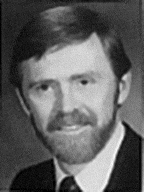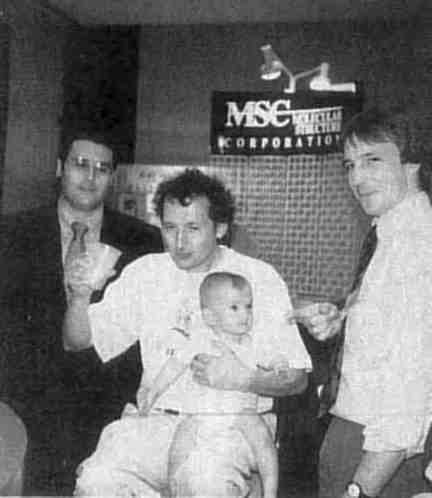
Editorial
Editorial

If you know people (crystallographers, potential advertisers, government officials involved in science policy, or individuals involved in science funding) who should be receiving the Newsletter, send us names and addresses so we can add them to the mailing list.
Congress program proposals
May 10, 1995 is the deasline for receipt of suggestions from YOU for plenary lectures, session topics, and speakers for the XVII Congress and General Assembly in Seattle Washington, August 8-17, 1996. Address your suggestions to any member of the program committee with a copy to the Program Committee Chairman (WLD). Committee member names and addresses appear in Vol. 2, No. 3, page 9. Please review the revised list of Congress Program Categories and Topics on page 12 of this issue. If your particular interest in crystallography is not represented, let the Program Committee know about it.
What's hot
The tide of exciting macromolecular structure determinations continues to rise. The structure determination of a myosin subfragment by I. Rayment et al. (Science 261, 50-58, 1993) and of the human class II histocompatibility antigen by J. H. Brown et al. (Nature 364, 33-39, 1993) were recently listed in the Science Citation Index as among the most highly cited papers of the last two years.
 Alwyn Jones, seated, discusses the marketing of his newest product with MSC representatives at the Toledo ACA meeting in 1991. (Photo WLD)
Alwyn Jones, seated, discusses the marketing of his newest product with MSC representatives at the Toledo ACA meeting in 1991. (Photo WLD)
A Special News Report in the Feb. 3, 1995 issue of Science citing the work of a dozen crystallographers, paid special tribute to the talent of Alwyn Jones (author of FRODO and co-author of 'O') and stated that the flood of brightly colored images of protein structure based upon crystallographic results is "changing the way biology is done." Images illustrated included the pictures of the human growth hormone and chaperonin that appear on the June and December Crystallographic Calendar pages, respectively, and the picture of p53 that appears on page 22 of this issue. Dorothy Hodgkin lives on in recent structural studies that show how a protein binds vitamin B12 (C. L. Drennan, Science 266, 1669-1674, 1994) and reveal the catalytic center of penicillin acylase (H. J. Duggleby et al., Nature 373, 264-268, 1995). The phenomenally prolific laboratories of Howard Hughes scientists Paul Sigler and Steven Harrison have independently reported the structure determination of the biggest DNA binding domain yet. In commenting on the articles that appear in the January 26, 1995 issue of Nature, D. Baltimore and A. A. Beg state "The miracle of X-ray crystallography has brought forth from the chrysalis of the NF-KB transcription factor a butterfly that grips DNA by enveloping it."
Synchrotron radiation sources that have played a major role in this explosion of structural knowledge are also critical to new techniques that permit the visualization of enzymic reactions as they happen. A feature story in Science (266, 364-365, 1994) describes how J. Berendzen of Los Alamos National Laboratories and K. Moffat of the University of Chicago used stop action techniques and synchrotron radiation to follow the storage and release of oxygen from myoglobin. Previous applications of the synchrotron/Laue techniques have included the work of L. Johnson and J. Hajdu of Oxford on phosphorylase and R. Sweet and colleagues at Brookhaven on trypsin. These studies should lay to rest the question of the relevance of the structure in the "solid" state to biological function.
Follow-up
If you have not seen it, we direct your attention to the August 1994 issue of Chemistry of Materials (Vol. 6, #8) which was dedicated to Peggy Etter "an inspirational force and a leader in the rapidly emerging field of solid state organic chemistry". The 360 page volume is devoted to articles related to or closely identified with the life work of this remarkable crystallographer.
Frank Rotella wrote to request that co-authorship by Art Schultz of a Vol. 2, No. 4 article concerning the Transactions of the ACA entitled "Time of Flight Diffraction at Pulsed Neutron Sources" be acknowledged. Henk Schenk wrote to supply the name of the unidentified person in the picture on page 15 of Vol. 2, No. 4 as Alexander Yatsenko.



